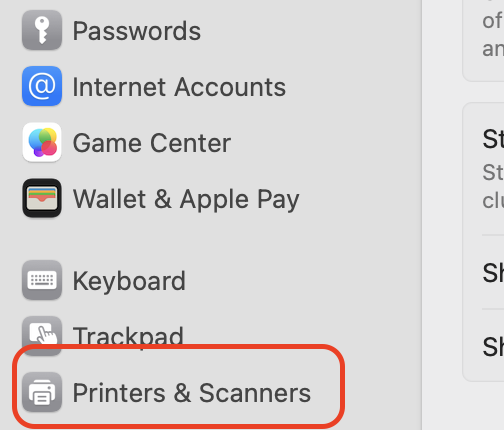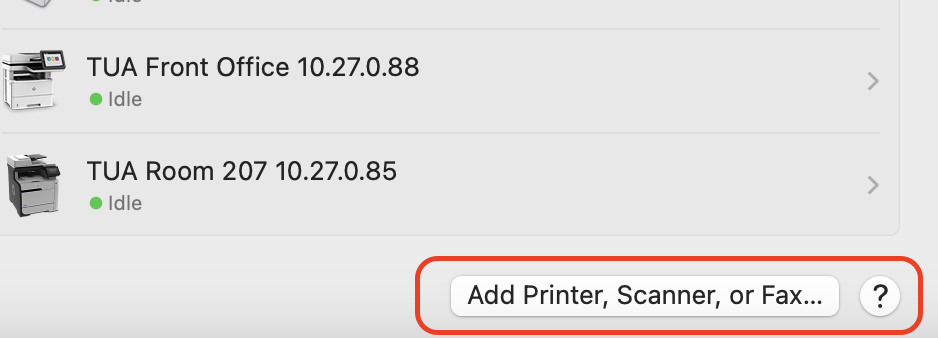Adding a Printer on a Macbook
Note: Before adding a printer, you’ll need to Request Admin Privileges through JAMF Connect. This temporarily elevates your TTSD password to administrator level, which is required to install a printer on your MacBook.

How to setup a new printer on your Mac computer using an IP address.
November 2025: Updated for macOS 15 (Sequoia)
1. Click on the Apple symbol at top of menu
2. Select System Settings
3. Select Printers & Scanners - bottom of page

4. Click the "Add Printer, Scanner, or Fax" button (bottom of page) to add a new printer and then select the globe symbol under the words "Add Printer"
5. In the Protocol pulldown menu, select Line Printer Daemon - LPD

6. In the Address field, enter the printer’s IP address, which is labeled on the front of the device or displayed on its screen (for example: 10.20.0.123).
7. The IP address will auto-populate in the Name but you can rename the printer if you choose (for example: Library 10.20.0.123).
8. Click Add